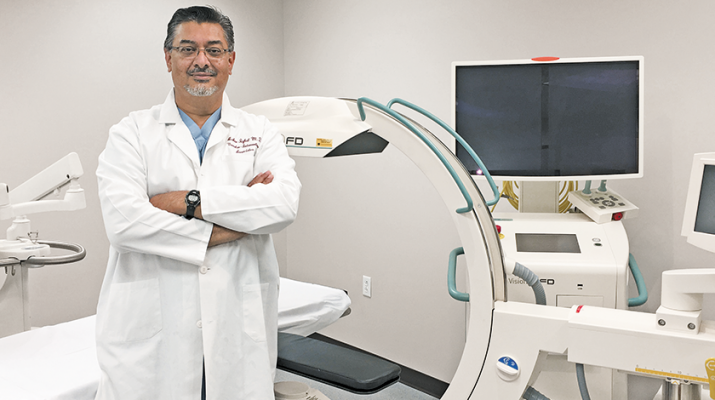Field has dramatically expanded the role it plays in treatments, diagnosis
By Deborah Jeanne Sergeant
Many people become familiar with radiology through a diagnostic such as X-ray or sonogram. But the field has grown dramatically in the past several years to make the radiologist a vital part of treating diseases and disorders from head to toe.
One example is interventional radiology, which can enable minimally invasive procedures.
“This new realm with interventional radiology is essentially a different route to treat relatively aggressive diseases,” Linda Kerwin, dean of health professions at Trocaire College. “We can perform surgery in almost every organ.”
For example, instead of creating an incision in the neck to clear the carotid artery, threading instruments through a nick in the skin to clear the lesion is less painful and expensive. Patients experience much shorter recovery and a reduced risk for infection.
Kerwin also referenced abdominal aneurism.
“Depending on the size, we can enter a vessel in your groin,” she said. “We can do a repair considerably less invasive than a huge abdominal incision with pain medicine.”
Medical imaging can also help guide a catheter to administer radiation to tumors in organs and bones to target the malignant cells while leaving healthy ones intact.
“They’ve been most successful with kidney cancer,” Kerwin said. “Liver cancer in the past has been extremely hard to treat. We can enter the system and be more precise in fighting a malignancy.
“Neurovascular-wise, we’re going farther into the brain to treat malignancies that before were considered inoperable.”
Vertebrae repair offers another example. For an elderly patient, a fractured vertebrae begins a sharp physical decline as mobility is minimized.
“Those who get spine fractures get put on bed rest for 12 weeks with narcotics,” said physician Azher Iqbal with Vascular Interventional Associates in Lancaster. “They can get constipation, pneumonia and their bones get weaker because of the bed rest.”
Staying laid up so long can also lead to lack of social interaction and further deconditioning. But thanks to radiology, physicians can perform a vertibroplasty, a procedure that involves injecting cement to stabilized the fractured bone through a 1/8-in. incision.
“It stabilizes the bone and they’re pain-free in two hours and go home the same day,” Iqbal said.
For elderly patients unable to tolerate general anesthesia and invasive surgery, the procedure has proven life-changing.
A vascular interventional radiologist, Iqbal offers a variety of treatments. He recently opened Buffalo Vascular Center in Lancaster, a full clinical practice, because of the growth in vascular-based treatments. His new center focuses on reducing amputation rates by using interventional radiology to restore blood flow to limbs endangered by non-healing ulcers. The outpatient procedures enable patients to return home after two hours.
Iqbal said that using interventional radiology can help prevent hysterectomy. Treating uterine fibroids used to mean hysterectomy; however, radiologists can use an artery in the leg or groin to embolize the blood vessels and shrink the fibroids until they become asymptomatic. Patients can return home the same day instead of the lengthy hospital stay caused by hysterectomy. Plus, patients avoid the risk of adhesions and scar tissue associated with abdominal surgery.
“It’s an option not generally offered because most physicians are not aware of it,” Iqbal said. “It’s an excellent treatment for women who don’t want to undergo major abdominal surgery.”
Correcting varicose veins is another procedure Iqbal offers. Previously, patients’ only choice for the painful condition was what Iqbal “stripping out the veins.”
Instead, ablation of the main veins of the leg, guided by medical imaging, can greatly decrease pain in the legs and improve the appearance, too. Patients can return home after the hour-long procedure instead of experiencing a prolonged hospital stay.
Although radiology’s minimally invasive procedures won’t replace general surgery, for some conditions, it can reduce recovery time while providing the same or even better results.
For many of these procedures, a little sedation and a numbing medication is all patients need instead of general anesthesia. Using imaging can help reduce the length of hospital stays and turn some procedures into outpatient treatments.

